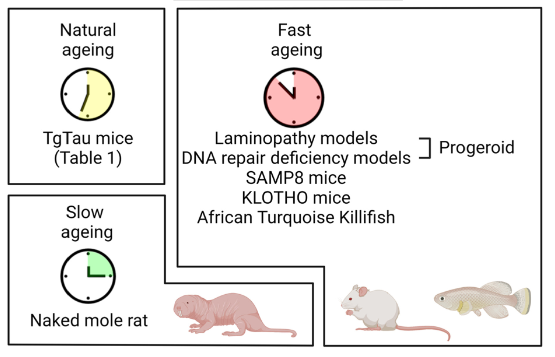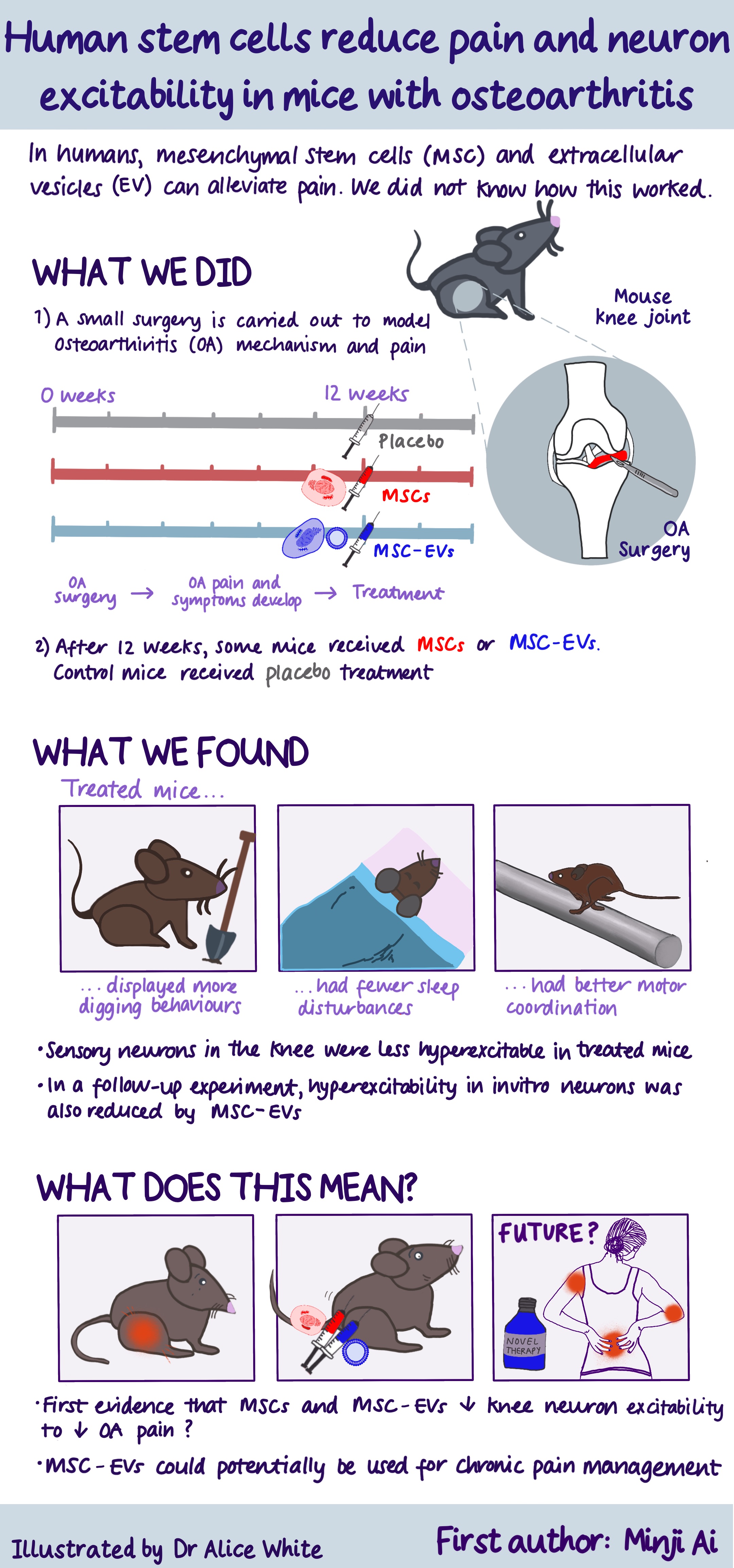Our academic researchers regularly publish articles in various journals. We have embedded an RSS feed scraping PubMed listing all new publications. Below, we have a few highlighted publications from this Department:
Can accelerated ageing models inform us on age-related tauopathies?
Published 20th March 2023
Ageing is the greatest risk factor of late-onset neurodegenerative diseases. In the realm of sporadic tauopathies, modelling the process of biological ageing in experi-mental animals forms the foundation of searching for the molecular origin of patho-genic tau and developing potential therapeutic interventions. Although prior research into transgenic tau models offers valuable lessons for studying how tau mutations and overexpression can drive tau pathologies, the underlying mechanisms by which ageing leads to abnormal tau accumulation remains poorly understood. Mutations associated with human progeroid syndromes have been proposed to be able to mimic an aged environment in animal models. Here, we summarise recent attempts in mod-elling ageing in relation to tauopathies using animal models that carry mutations as-sociated with human progeroid syndromes, or genetic elements unrelated to human progeroid syndromes, or have exceptional natural lifespans, or a remarkable resist-ance to ageing- related disorders.
Discovery and Structure–Activity Relationship Studies of Novel Adenosine A1 Receptor-Selective Agonists
Published September 19th, 2022
A series of benzyloxy and phenoxy derivatives of the adenosine receptor agonists N6-cyclopentyl adenosine (CPA) and N6-cyclopentyl 5′-N-ethylcarboxamidoadenosine (CP-NECA) were synthesized, and their potency and selectivity were assessed. We observed that the most potent were the compounds with a halogen in the meta position on the aromatic ring of the benzyloxy- or phenoxycyclopentyl substituent. In general, the NECA-based compounds displayed greater A1R selectivity than the adenosine-based compounds, with N6-2-(3-bromobenzyloxy)cyclopentyl-NECA and N6-2-(3-methoxyphenoxy)cyclopentyl-NECA showing ∼1500-fold improved A1R selectivity compared to NECA. In addition, we quantified the compounds’ affinity and kinetics of binding at both human and rat A1R using a NanoBRET binding assay and found that the halogen substituent in the benzyloxy- or phenoxycyclopentyl moiety seems to confer high affinity for the A1R. Molecular modelling studies suggested a hydrophobic subpocket as contributing to the A1R selectivity displayed. We believe that the identified selective potent A1R agonists are valuable tool compounds for adenosine receptor research.
Human mesenchymal stem cells and derived extracellular vesicles reduce sensory neuron hyperexcitability and pain behaviors in murine osteoarthritis
Smith Group
Published October 21st, 2022
Mesenchymal stem cells (MSCs) induce pain relief in humans with osteoarthritis (OA), but their ability to modulate neuronal function is unclear. In this study, it is shown that MSCs and MSC extracellular vesicles (MSC-EVs) ameliorate pain in a mouse model of OA without altering joint pathology. Furthermore, the OA-induced hyperexcitability of knee-innervating neurons was found to be counteracted by MSC/MSC-EV treatment. Nerve growth factor (NGF) is a key player in OA-induced pain and in vitro MSC-EVs prevented NGF sensitisation of sensory neurons. Future work will focus on identifying the mechanisms by which MSC-EVs regulate neuronal excitability.
A multiparametric anti-aging CRISPR screen uncovers a role for BAF in protein translation
Larrieu Group
Posted October 7th, 2022
This study reports the results of what we believe to be the first multiparametric, whole genome anti-ageing CRISPR screen, using progeria patient cells. Through this screen, we have successfully identified 43 genes out of 19,200 whose deletion reversed a combination of specific progeroid cellular phenotypes, opening up new perspectives for understanding the cell biology of ageing, and also offering exciting new opportunities for drug-development.




